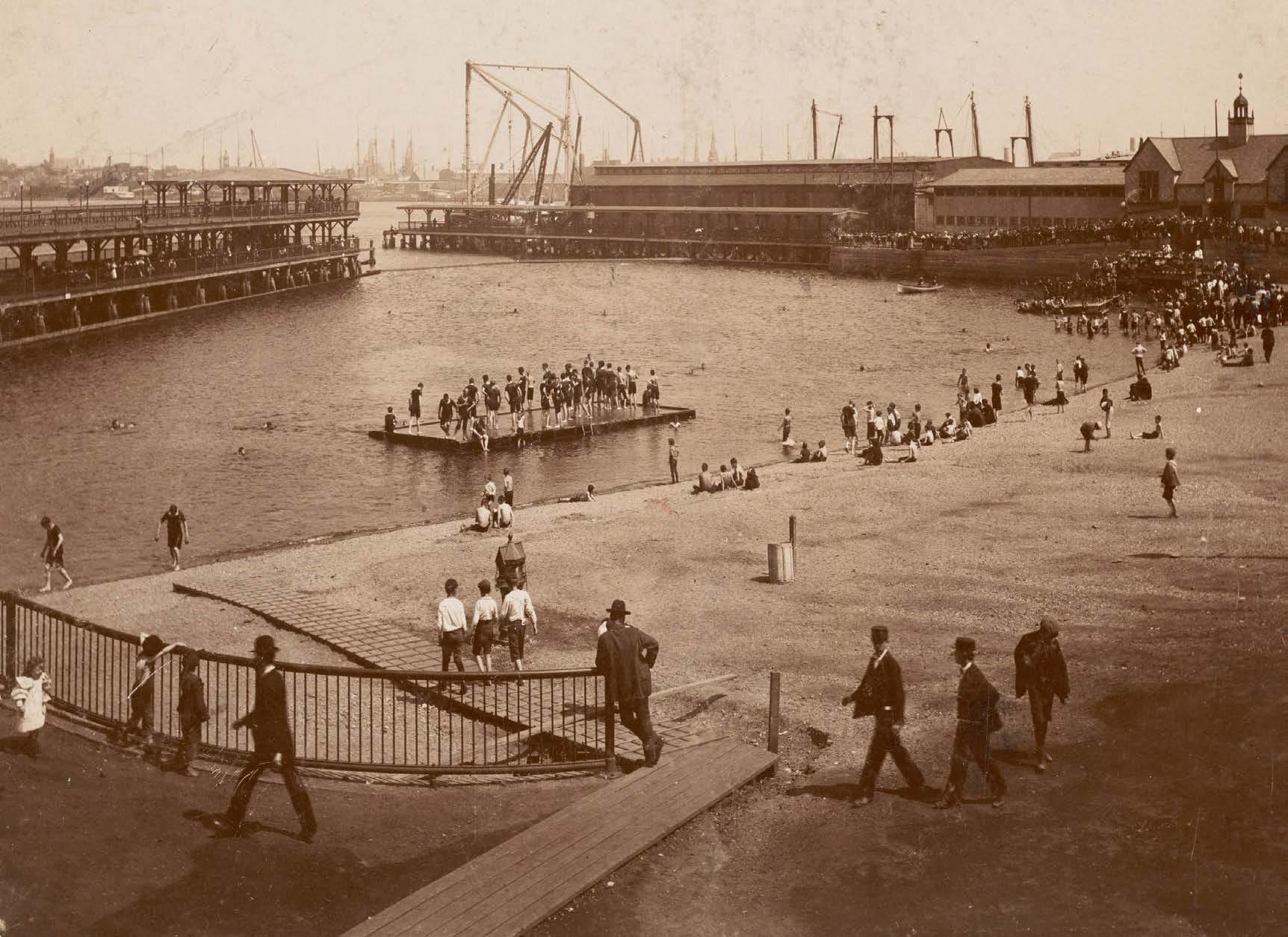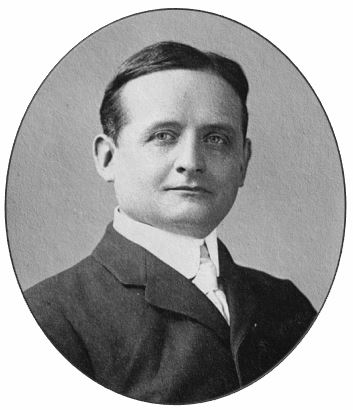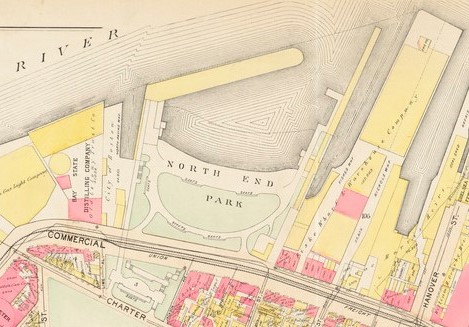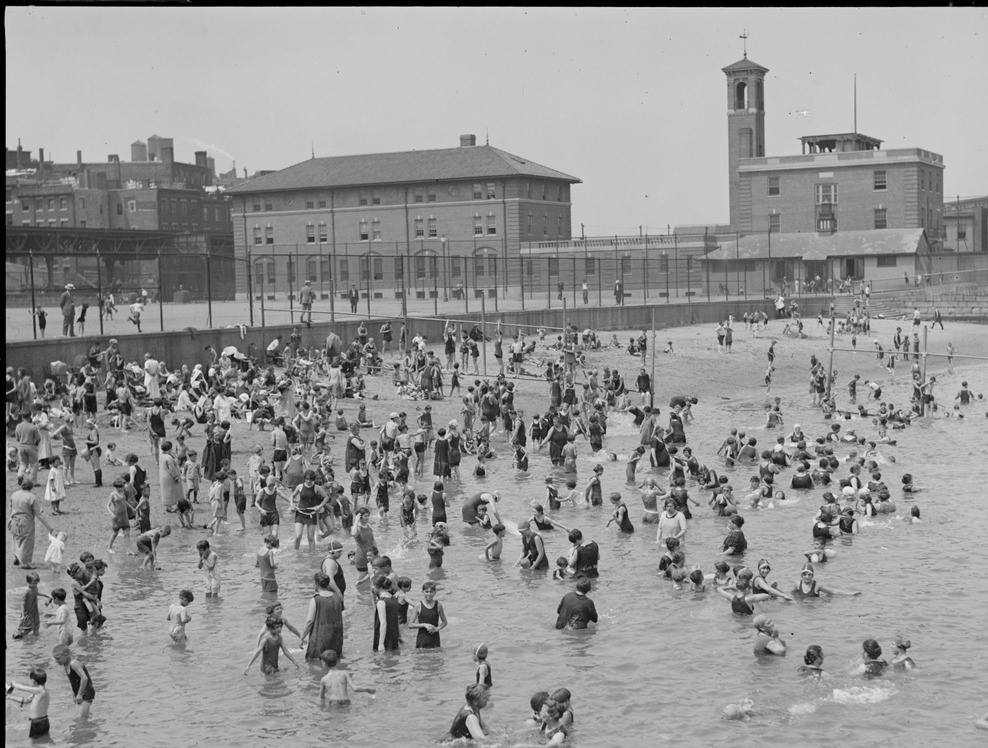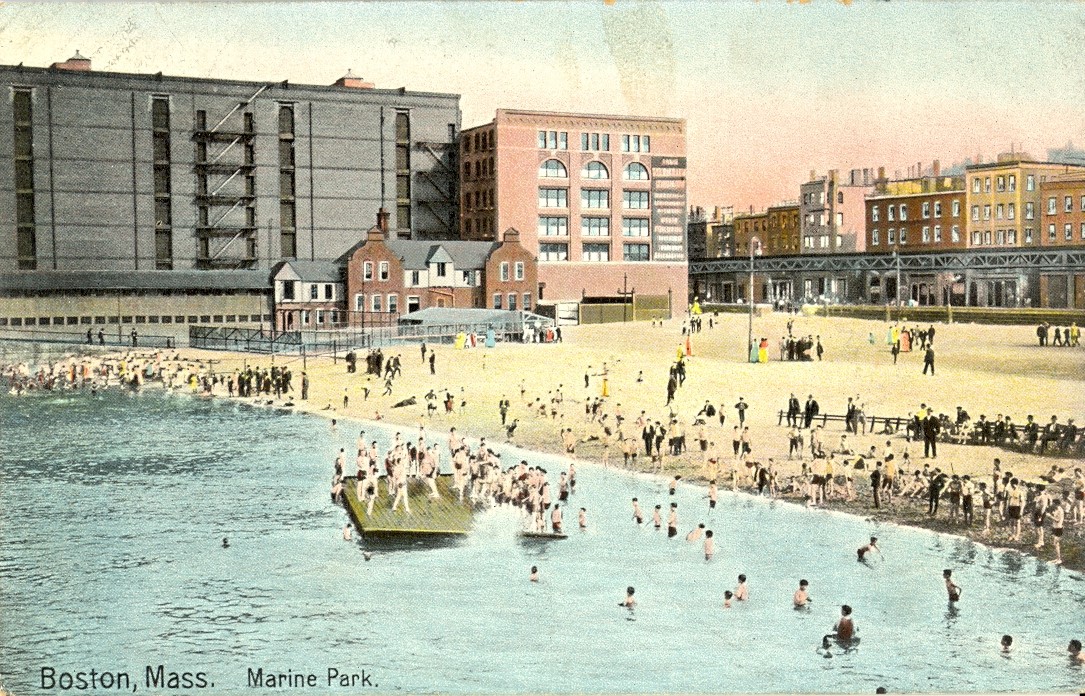Fresh Air and Salt Water
in the North End
The promenade (left) enclosed North End Beach to protect swimmers from the industrial harbor. But in later years, daring boys would jump off it and swim to the Charlestown Navy Yard and back, gaining much local prestige.
Courtesy of Boston Public Library
For over 50 years residents enjoyed a sandy harbor beach here. Designed by Charles Eliot, of Olmsted, Olmsted and Eliot, North End Park transformed an area of wharves and industrial buildings into a “neighborhood pleasure ground” that included the beach, public baths, a lawn, and a two-story promenade.
North End residents gained much-needed recreational space when the park opened in 1897. In time the beach attracted as many as 5,000 people a day. Swimming lessons were provided, and lifeguards kept watch from boats and shore. Intra-city swim meets were watched by enthusiastic crowds.
Championed by City Councilor John F. Fitzgerald, the park also revived Boston’s public bath movement, promoting cleanliness in a congested neighborhood where most homes lacked bathing facilities. Men’s and women’s bath houses—at opposite ends of the beach—were free, with clean towels and bathing suits supplied at nominal charge.
By the 1940s, harbor pollution led to frequent beach closures, prompting Boston to replace the beach in June 1952 with a swimming and wading pool, as well as playing fields—all still in active use today.
Bathers of all ages cooled off in the water to escape the heat. A 1923 redesign by Arthur Shurtleff created separate beaches for women and men and a playground in place of the lawn. Beyond, a Boston police station and fire-house replaced buildings destroyed by the 1919 Molasses Flood.
Courtesy of the Boston Public Library, Leslie Jones Collection
Sign Location
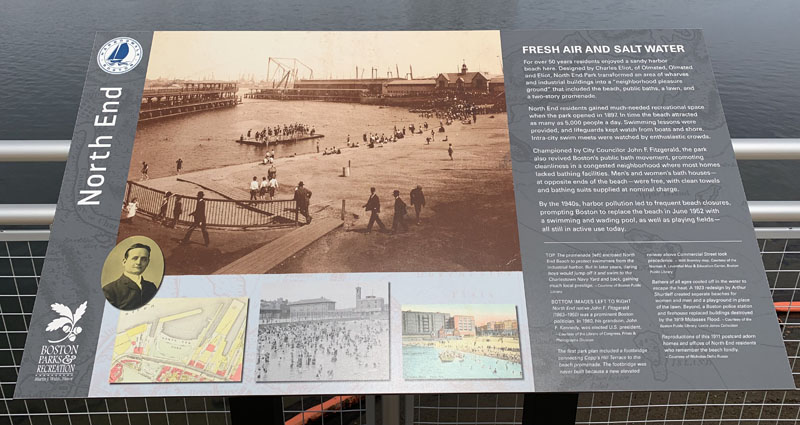
More …
Resources
- Annual Report of the Department of Baths for the Year 1900. City of Boston, 1901.
- Cole, William I. “Free Municipal Baths in Boston.” Mind and Body, Jan. 1900 pp. 241-245 and Feb. 1900 pp. 265-273.
- Common Council Minutes 1892. City of Boston, 1892.
- Della Russo, Nicholas. “Life on the Corner: The North End Beach.” NorthEndWaterfront.com, https://northendwaterfront.com/2016/05/life-corner-north-end-beach/. Accessed 11 December 2019.
- Lee, Joseph. “Playgrounds, Beaches and Baths.” Fifty Years of Boston – A Memorial Volume Issued in Commemoration of the Tercentenary of 1930, edited by Herlihy, Elizabeth M., 1932, pp. 672-683.
- “North End Pool to Be Opened Sunday, June 22.” The Boston Globe, Jun. 10, 1952.
- Olmsted, F. L. Jr. “Neighborhood Pleasure Grounds in Boston.” Harpers Weekly, Dec. 25, 1897, pp. 1290-1293.
- Olmsted, Olmsted and Eliot. Plan for North End Park. 1894. City of Boston
- “Pollution Closes North End Beach.” The Boston Globe, Jul. 15, 1949.
- Riccio, Anthony V. Boston’s North End: Images and Recollections of an Italian-American Neighborhood. Insiders’ Guide – Globe Pequot Press, 1998.
- Shurtleff, Arthur A. Sketch Plan of North End Bathing Beach. 1923. City of Boston
- Stewart, Jane. “Boston’s Experience with Municipal Baths.” American Journal of Sociology, Nov. 1901, pp. 416-422
- “Where North Enders Bathe. New Baths at the Park Have Been Well Patronized Since They Were Opened.” The Boston Globe, Jul. 15, 1897
- Williams, Marilyn Thornton. Washing “The Great Unwashed”: Public Baths in North America 1840-1920. Ohio State University Press, 1991.
- Zaitzevsky, Cynthia. Frederick Law Olmsted and the Boston Park System. The Belnap Press of Harvard University Press, 1982.
Acknowledgments
Warm thanks to Nicholas Dello Russo, lifelong North End resident, who shared his many stories of North End Beach, along with the depicted postcard.
A special thank you to Alex Goldfeld, president of the North End Historical Society, who took time out of his busy schedule to review sign contents and offer helpful suggestions.

